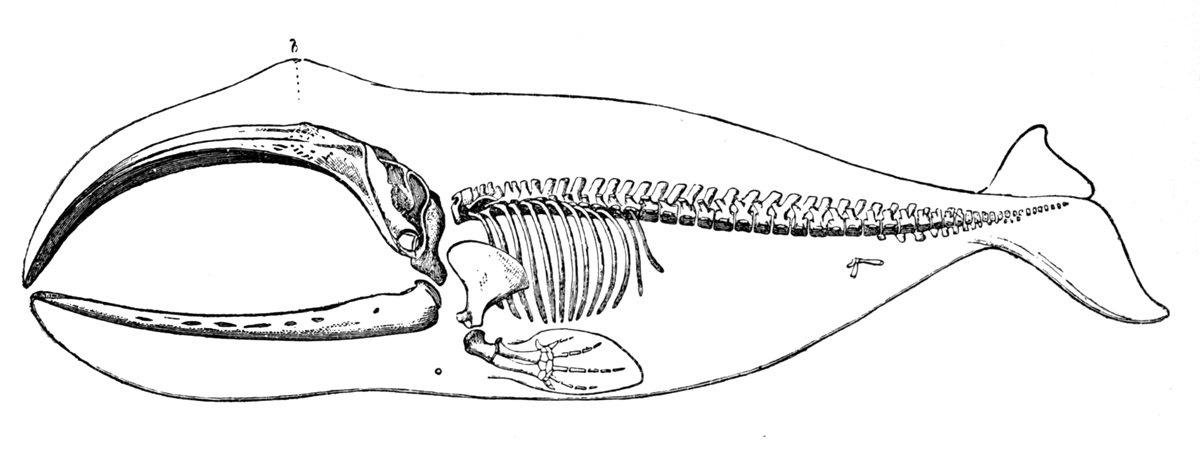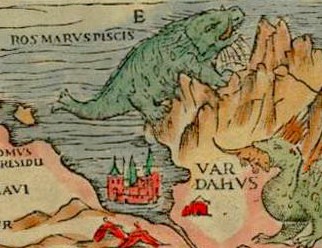|
Siberian Yupik
Siberian Yupiks, or Yuits (), are a Yupik peoples, Yupik people who reside along the coast of the Chukchi Peninsula in the far Russian Far East, northeast of the Russia, Russian Federation and on St. Lawrence Island in Alaska. They speak Siberian Yupik language, Central Siberian Yupik (also known as Yuit), a Yupik language of the Eskimo–Aleut family of languages. They are also known as Siberian or Eskimo (). The name Yuit (юит, plural: юиты) was officially assigned to them in 1931, at the brief time of the campaign of support of Indigenous cultures in the Soviet Union. Their self-designation is Yupighyt (йупигыт) meaning "true people". Sirenik Eskimos also live in that area, but their extinct language, Sireniki Eskimo language, Sireniki Eskimo, shows many peculiarities among Eskimo languages and is mutually unintelligible with the neighboring Siberian Yupik languages. [...More Info...] [...Related Items...] OR: [Wikipedia] [Google] [Baidu] |
Chukotka Autonomous Okrug
Chukotka ( ; ), officially the Chukotka Autonomous Okrug, is the easternmost federal subjects of Russia, federal subject of Russia. It is an Autonomous okrugs of Russia, autonomous okrug situated in the Russian Far East, and shares a border with the Sakha Republic to the west, Magadan Oblast to the south-west, and Kamchatka Krai to the south, as well as a Maritime boundary, maritime border on the Bering Strait with the U.S. state of Alaska to the east. Anadyr (town), Anadyr is the largest types of inhabited localities in Russia, town and the administrative center, capital, and the easternmost settlement to have town status in Russia. It is the closest point from Russia to the United States, measuring at 88.51 kilometres or 55 miles. Chukotka is primarily populated by ethnic Russians, Chukchi people, Chukchi, and other Indigenous peoples of Siberia, indigenous peoples. It is the only autonomous okrug in Russia that is not included in, or subordinate to, another federal subject, ... [...More Info...] [...Related Items...] OR: [Wikipedia] [Google] [Baidu] |
Siberian Yupik Language
Central Siberian Yupik (also known as Siberian Yupik, Bering Strait Yupik, Yuit, Yoit, "St. Lawrence Island Yupik", and in Russia "Chaplinski Yupik" or Yuk) is an endangered Yupik language spoken by the Indigenous Siberian Yupik people along the coast of Chukotka in the Russian Far East and in the villages of Savoonga and Gambell on St. Lawrence Island. The language is part of the Eskimo-Aleut language family. In the United States, the Alaska Native Language Center identified about 400-750 Yupigestun speakers, considering “ dormant speakers” who understand but cannot converse. In Russia in 2021, 172 people indicated that they speak the language, while only 92 of them use it in everyday life. Thus, the total number of speakers is no more than 550-900 people. Dialects and subgroups Siberian Yupik has two dialects: Chaplino (Chaplinski) Yupik (Uŋazigmit) is spoken on the shores of Chukotka Autonomous Okrug in the Russian Far North, and St. Lawrence Island Yupik (Sivuq ... [...More Info...] [...Related Items...] OR: [Wikipedia] [Google] [Baidu] |
Shamanism In Siberia
A large minority of people in North Asia, particularly in Siberia, follow the religio-cultural practices of shamanism. Some researchers regard Siberia as the heartland of shamanism. The people of Siberia comprise a variety of ethnic groups, many of whom continue to observe shamanistic practices in modern times. Many classical ethnographers recorded the sources of the idea of "shamanism" among Siberian peoples. Terminology in Siberian languages *'shaman': ''saman'' (Nedigal, Nanay, Ulcha, Orok), ''sama'' (Manchu). The variant /šaman/ (i.e., pronounced "shaman") is Evenk (whence it was borrowed into Russian). *'shaman': (Yukagir) *'shaman': (Tatar, Shor, Oyrat), (Tuva, Tofalar) *The Buryat word for shaman is ''бөө'' (''böö'') , from early Mongolian ''böge''. Itself borrowed from Proto-Turkic *bögü ("sage, wizard") *'shaman': ńajt (Khanty, Mansi), from Proto-Uralic (cf. Sámi ) *'shamaness': (Mongol), (Yakut), (Buryat), (Evenki, Lamut), (Nedigal). Related ... [...More Info...] [...Related Items...] OR: [Wikipedia] [Google] [Baidu] |
Bowhead Whale
The bowhead whale (''Balaena mysticetus''), sometimes called the Greenland right whale, Arctic whale, and polar whale, is a species of baleen whale belonging to the family Balaenidae and is the only living representative of the genus '' Balaena''. It is the only baleen whale endemic to the Arctic and subarctic waters, and is named after its characteristic massive triangular skull, which it uses to break through Arctic ice. Bowheads have the largest mouth of any animal representing almost one-third of the length of the body, the longest baleen plates with a maximum length of , and may be the longest-lived mammals, with the ability to reach an age of more than 200 years. The bowhead was an early whaling target. Their population was severely reduced before a 1966 moratorium was passed to protect the species. Of the five stocks of bowhead populations, three are listed as "endangered", one as " vulnerable", and one as "lower risk, conservation dependent" according to the IUCN Red ... [...More Info...] [...Related Items...] OR: [Wikipedia] [Google] [Baidu] |
Walrus
The walrus (''Odobenus rosmarus'') is a large pinniped marine mammal with discontinuous distribution about the North Pole in the Arctic Ocean and subarctic seas of the Northern Hemisphere. It is the only extant species in the family Odobenidae and genus ''Odobenus''. This species is subdivided into two subspecies: the Atlantic walrus (''O. r. rosmarus''), which lives in the Atlantic Ocean, and the Pacific walrus (''O. r. divergens''), which lives in the Pacific Ocean. Adult walrus are characterised by prominent tusks and whiskers, and considerable bulk: adult males in the Pacific can weigh more than and, among pinnipeds, are exceeded in size only by the two species of elephant seals. Walrus live mostly in shallow waters above the continental shelves, spending significant amounts of their lives on the sea ice looking for benthic bivalve molluscs. Walruses are relatively long-lived, social animals, and are considered to be a " keystone species" in the Arctic marine regio ... [...More Info...] [...Related Items...] OR: [Wikipedia] [Google] [Baidu] |
Gambell, Alaska
Gambell () is a city in the Nome Census Area of the U.S. state of Alaska. Located on St. Lawrence Island, it had a population of 640 at the 2020 census, down from 681 in 2010. History ''Sivuqaq'' is the Yupik language name for St. Lawrence Island and for Gambell. It has also been called ''Chibuchack'' and ''Sevuokok''. St. Lawrence Island has been inhabited sporadically for the past 2,000 years by both Alaskan Yup'ik and Siberian Yupik people. In the 18th and 19th centuries, the island had a population of about 4,000. Between 1878 and 1880 a famine decimated the island's population. Many who did not starve left. The remaining population of St. Lawrence Island was nearly all Siberian Yupik. In 1887, the Reformed Episcopal Church of America opened a mission on St. Lawrence Island. That year, a carpenter, lumber and tools were left at Sivuqaq by a ship. The carpenter worked with local Yupik to build a wood building, the first they had ever seen. When the building was ... [...More Info...] [...Related Items...] OR: [Wikipedia] [Google] [Baidu] |
Savoonga, Alaska
Savoonga is a city in Nome Census Area, Alaska, United States. It is located on St. Lawrence Island in the Bering Sea. As of the 2020 census, Savoonga's population was 835, up from 671 in 2010. Savoonga was incorporated in 1969. In 1971, it became joint owner of St. Lawrence Island along with the island's only other city, Gambell. The local economy consists largely of subsistence hunting for walrus, seals, fish, and bowhead whales. The city calls itself the "Walrus Capital of the World". A dogsled mail service operated until 1963. History St. Lawrence Island has been inhabited sporadically for the past 2,000 years by both Alaskan Yup'ik and Siberian Yupik people. In the 18th and 19th centuries, the island had a population of about 4,000 in numerous villages. Between 1878 and 1880, a famine devastated the island's population. Many who did not starve left. The remaining population of St. Lawrence Island was nearly all Siberian Yupik. In 1900, reindeer were introduced on th ... [...More Info...] [...Related Items...] OR: [Wikipedia] [Google] [Baidu] |
Asian Siberian Yupik Eskimo Map
Asian may refer to: * Items from or related to the continent of Asia: ** Asian people "Asian people" (sometimes "Asiatic people")United States National Library of Medicine. Medical Subject Headings. 2004. November 17, 200Nlm.nih.gov: ''Asian Continental Ancestry Group'' is also used for categorical purposes. is an umbrella term ..., people in or Asian diaspora, descending from Asia ** Asian culture, the culture of the people from Asia ** Asian cuisine, food based on the style of food of the people from Asia ** Asian (cat), a cat breed similar to the Burmese but in a range of different coat colors and patterns * Asii (also Asiani), a historic Central Asian ethnic group mentioned in Roman-era writings * Asian option, a type of option contract in finance * Asyan, a village in Iran See also * * * East Asia * South Asia * Southeast Asia * Asiatic (other) {{disambiguation ... [...More Info...] [...Related Items...] OR: [Wikipedia] [Google] [Baidu] |
Sireniki Eskimo Language
Sirenik Yupik, Sireniki Yupik (also Old Sirenik or Vuteen), Sirenik, or Sirenikskiy is an extinct Eskimo–Aleut language. It was spoken in and around the village of Sireniki (Сиреники) in Chukotka Peninsula, Chukotka Autonomous Okrug, Russia. The language shift has been a long process, ending in total language death. In January 1997, the last native speaker of the language, a woman named Vyjye (Valentina Wye) (), died. Ever since that point, the language has been extinct; nowadays, all Sirenik Eskimos speak Siberian Yupik or Russian. Despite this, censuses as late as 2010 report up to 5 native speakers of Sirenik. Сиӷы́ных is the endonym for the eponymous settlement of Sireniki. The endonym for the people itself is "Sirenikites"; the singular form is . This article is based on Menovschikov (1964), with cited examples transliterated from Cyrillic transcription to the International Phonetic Alphabet. Classification Genealogical External Some ar ... [...More Info...] [...Related Items...] OR: [Wikipedia] [Google] [Baidu] |
Extinct Language
An extinct language or dead language is a language with no living native speakers. A dormant language is a dead language that still serves as a symbol of ethnic identity to an ethnic group; these languages are often undergoing a process of revitalisation. Languages that have first-language speakers are known as modern or living languages to contrast them with dead languages, especially in educational contexts. Languages have typically become extinct as a result of the process of cultural assimilation leading to language shift, and the gradual abandonment of a native language in favor of a foreign ''lingua franca''. As of the 2000s, a total of roughly 7,000 natively spoken languages existed worldwide. Most of these are minor languages in danger of extinction; one estimate published in 2004 expected that some 90% of the languages spoken at that time will have become extinct by 2050. Language death Normally the transition from a spoken to an extinct language occurs when a ... [...More Info...] [...Related Items...] OR: [Wikipedia] [Google] [Baidu] |
Sirenik Eskimos
Sirenik or ''Sireniki'' ( ) are an Eskaleut-speaking ethnic group of Chukotka Autonomous Okrug and former speakers of a divergent Eskimo-Aleut language in Siberia, before its extinction in 1997. The total language death of this language means that now the cultural identity of Sirenik Yupik is maintained through other aspects: slight dialectal difference in the adopted Siberian Yupik language; sense of place,Binns n.d. 1 including appreciation of the antiquity of their settlement Sirenik. Location At the beginning of the 20th century, speakers of the Sirenik language inhabited the settlements of[...More Info...] [...Related Items...] OR: [Wikipedia] [Google] [Baidu] |
Soviet Union
The Union of Soviet Socialist Republics. (USSR), commonly known as the Soviet Union, was a List of former transcontinental countries#Since 1700, transcontinental country that spanned much of Eurasia from 1922 until Dissolution of the Soviet Union, it dissolved in 1991. During its existence, it was the list of countries and dependencies by area, largest country by area, extending across Time in Russia, eleven time zones and sharing Geography of the Soviet Union#Borders and neighbors, borders with twelve countries, and the List of countries and dependencies by population, third-most populous country. An overall successor to the Russian Empire, it was nominally organized as a federal union of Republics of the Soviet Union, national republics, the largest and most populous of which was the Russian SFSR. In practice, Government of the Soviet Union, its government and Economy of the Soviet Union, economy were Soviet-type economic planning, highly centralized. As a one-party state go ... [...More Info...] [...Related Items...] OR: [Wikipedia] [Google] [Baidu] |




